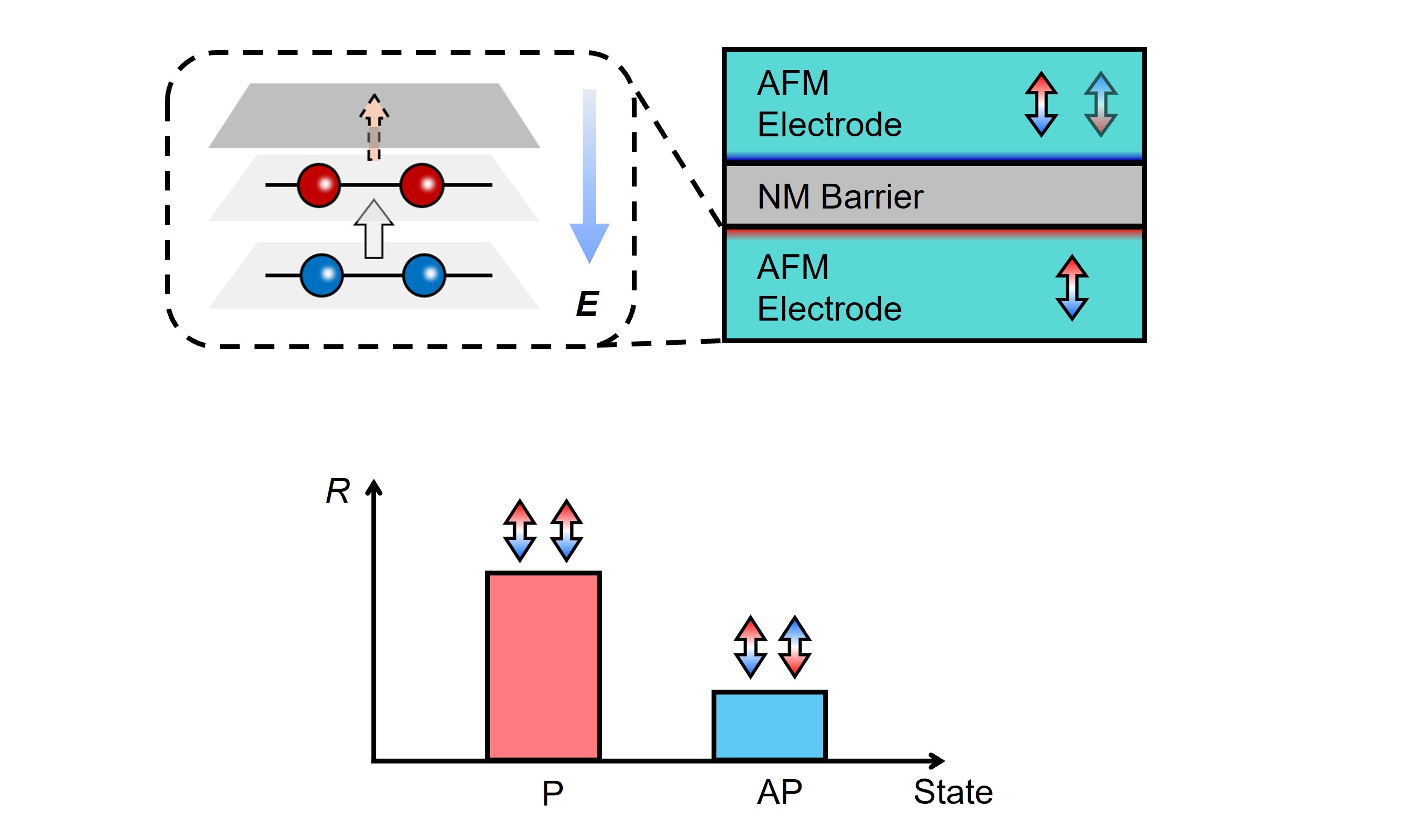
A research team led by Prof. SHAO Dingfu from the Hefei Institutes of Physical Science of the Chinese Academy of Sciences has unveiled a new mechanism for achieving strong spin polarization using antiferromagnetic metal interfaces.
Their findings, published in Newton, propose a third prototype of antiferromagnetic tunnel junction (AFMTJ), paving the way for faster, denser spintronic devices.
As the demand for smaller sizes, higher speeds, and lower energy use in electronics increases, spintronics, which uses both electron charge and spin, offers a strong alternative to traditional devices. Magnetic tunnel junctions (MTJs), a key spintronics technology, are already used in data storage, but they have limitations due to slow response speeds and the presence of unwanted magnetic fields from their ferromagnetic parts.
Antiferromagnetic (AFM) materials avoid these issues. They have no net magnetism or stray fields, and have much faster spin responses, making them ideal for future devices. However, current AFM tunnel junctions depend on specific bulk properties, which greatly limits material options.
In this study, the researchers addressed this challenge by shifting their focus to interface effects, which are often underestimated. They found that by suppressing bulk effects, certain AFM materials, particularly A-type antiferromagnets, to exhibit strong spin polarization at smooth and stable interfaces, even if the material itself lacks bulk spin-split states.
Using first-principles modeling, the researchers designed a new AFMTJ composed of a two-dimensional A-type AFM metal (Fe₄GeTe₂) and an insulating boron nitride (BN) barrier. Despite the spin-degenerate nature of Fe₄GeTe₂'s band structure, significant spin-polarized currents emerged due to interface-driven effects. These currents remained robust regardless of the electrode's thickness or layer parity, confirming their interface origin.
Importantly, the junction exhibited a tunnel magnetoresistance (TMR) of nearly 100%, comparable to conventional designs, by switching the relative orientation of the interfacial magnetic moments. This approach expands the range of materials suitable for spintronic devices, especially given that many AFM materials can be grown with A-type stacking by tuning growth directions.
In an accompanying Newton commentary, Prof. Jose Lado of Aalto University and Prof. Saroj P. Dash of Chalmers University of Technology commented on the work: "Uncompensated interfaces in antiferromagnets bring new opportunities for van der Waals heterostructures," praising the study's conceptual breakthrough and practical significance.
This study not only challenges the long-held belief that bulk effects are essential for AFM spintronic applications and lays a foundation for high-performance, interface-engineered devices in the post-Moore era.

Antiferromagnetic tunnel junction with interface-driventunneling magnetoresistance (Image by SHAO Dingfu)

86-10-68597521 (day)
86-10-68597289 (night)

52 Sanlihe Rd., Xicheng District,
Beijing, China (100864)

